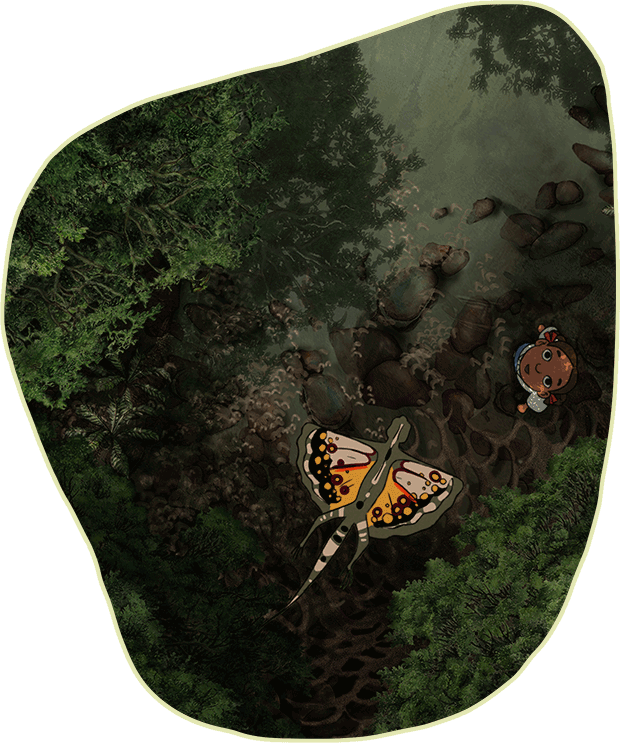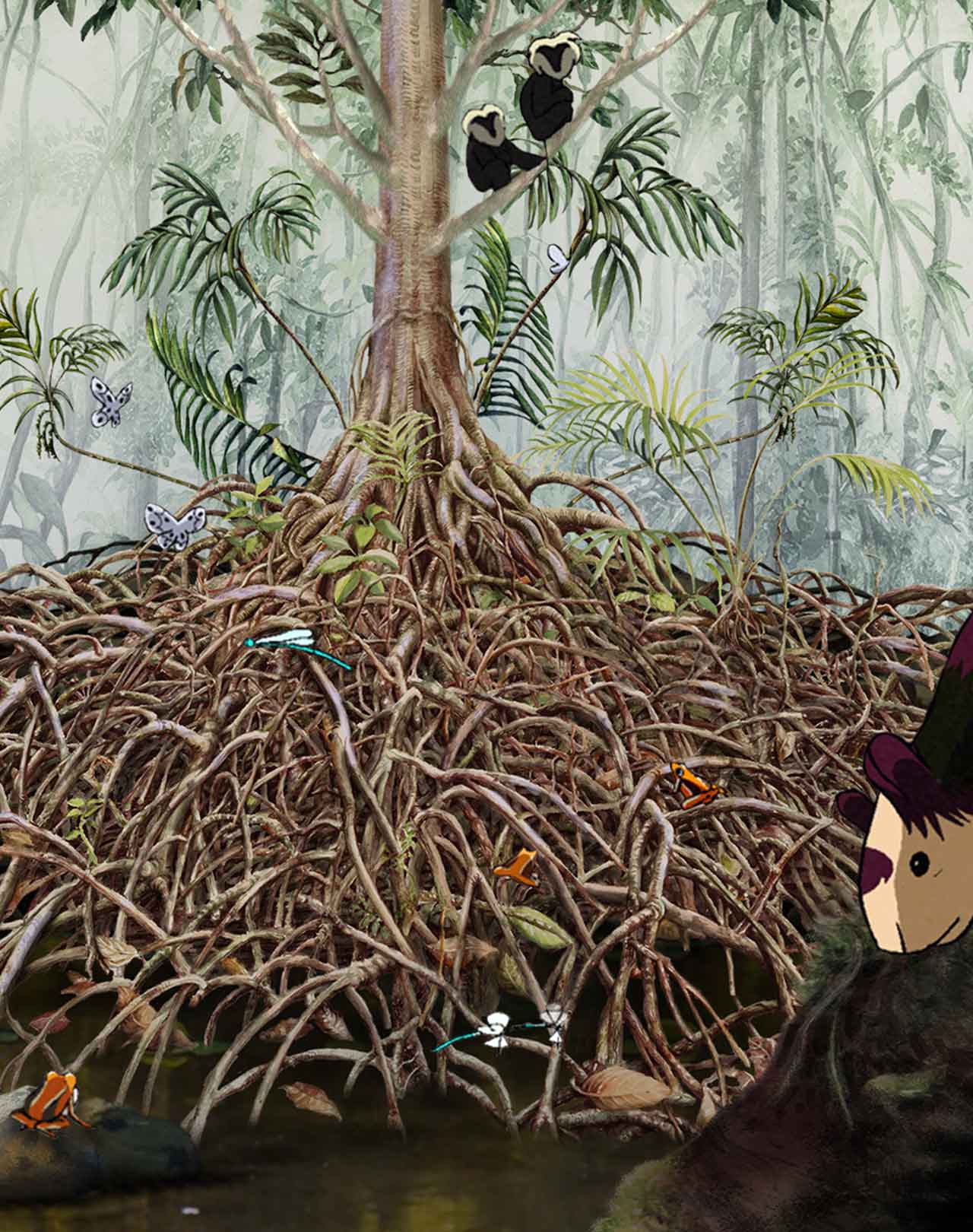
Flora &
Fauna of the Myristica Swamps
Click
on each star
to discover
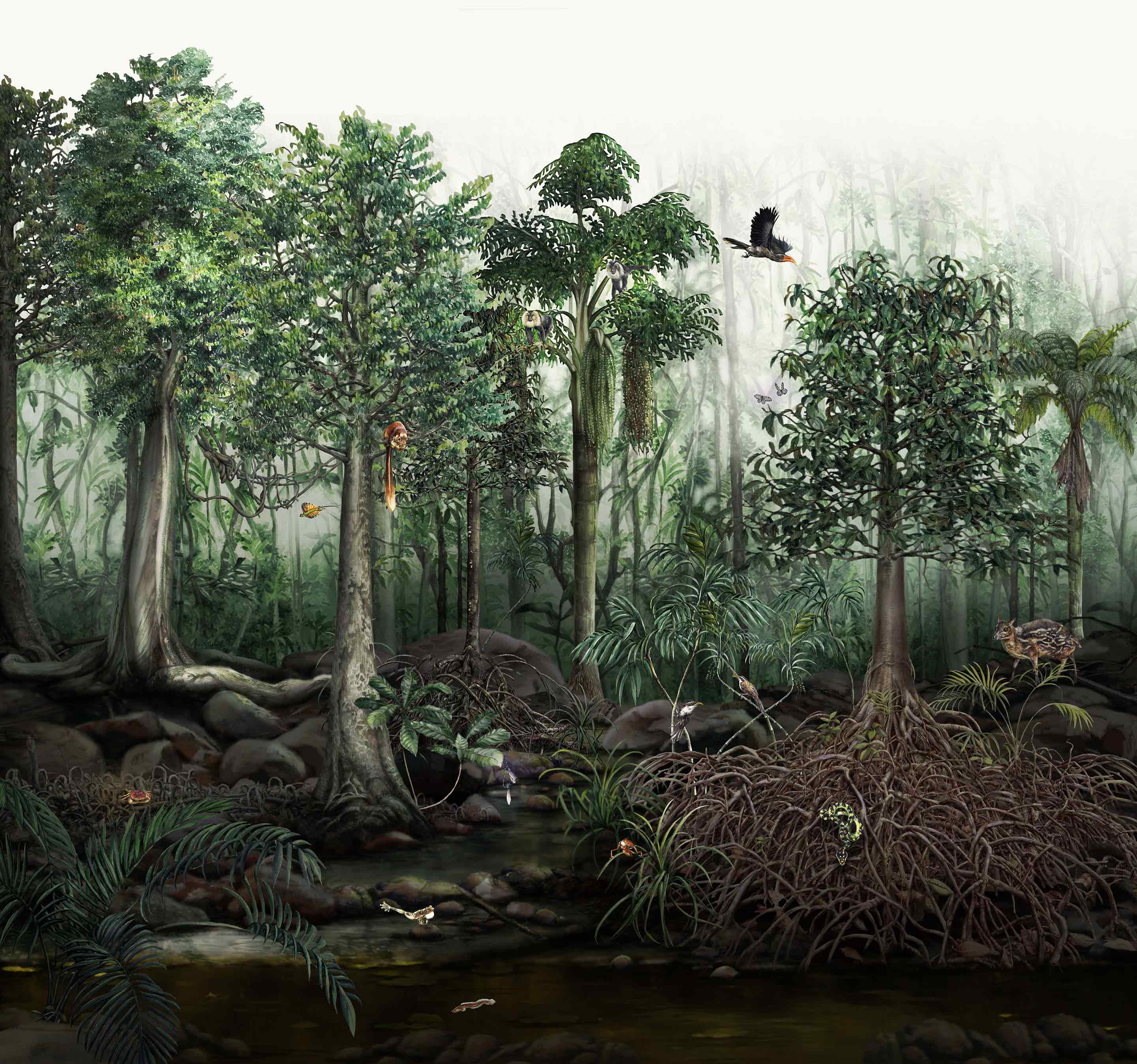
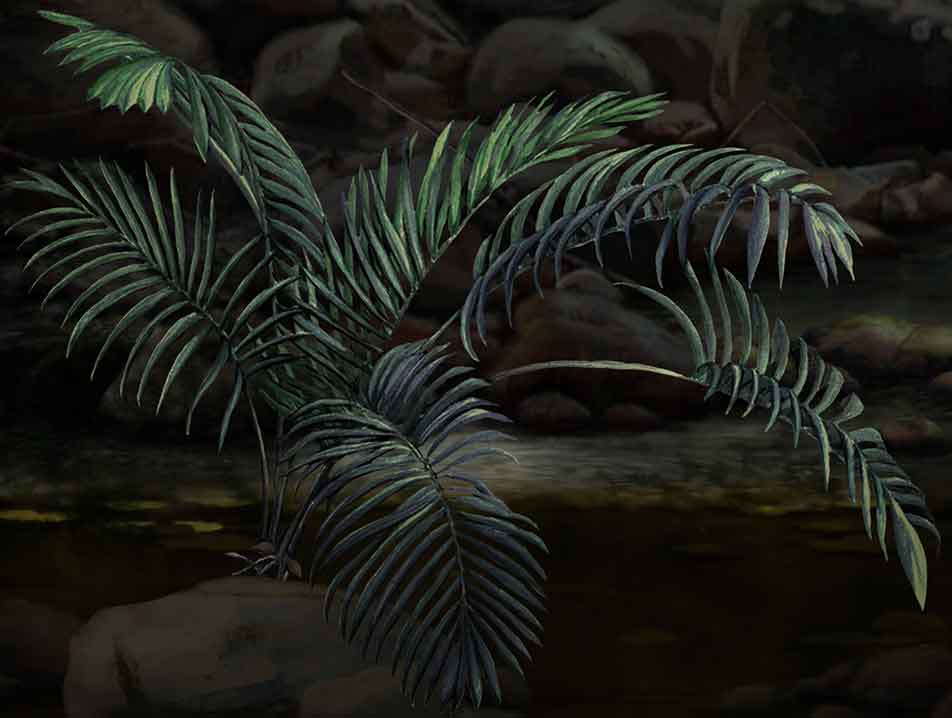
Wight’s Sago Palm
Arenga wightii
An endemic Indian palm. Spot two other palm species in the swamp.
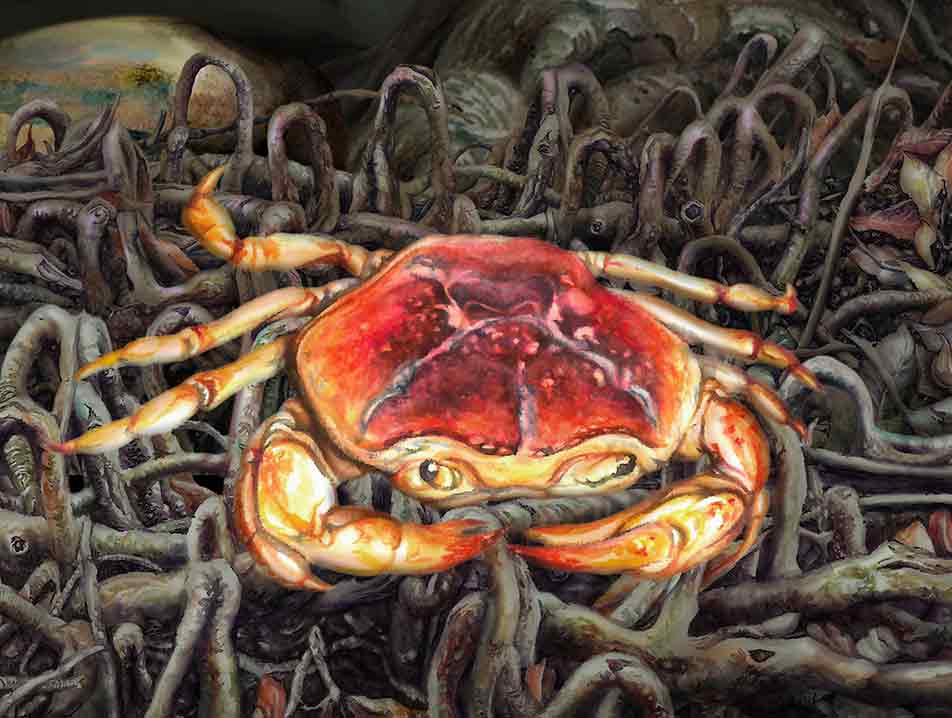
Crab
Barytelphusa guerini
In 2013, PhD student Shivani Krishna observed these small crabs emerging at night to carry Myristica seeds into their burrows, sometimes as far as two metres. Interestingly, while the crabs consumed the tasty arils, they didn’t eat the seeds. Instead, their burrows appeared to function as a safe refuge for seeds, from which they could escape predation by other animals and germinate when the time was right!
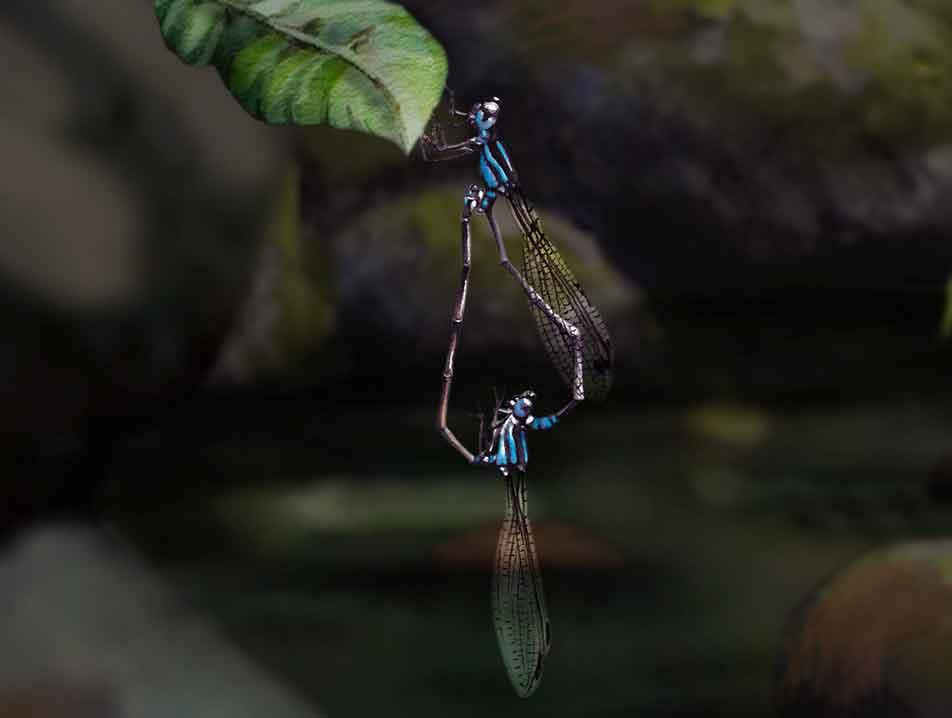
Myristica Bambootail
Phylloneura westermanni
Besides their ancient pedigree, damselflies are known for elaborate courtship rituals, designed to show off the males’ bright colours or flying abilities. Once a mate has been chosen, the pair cling together in a distinctive posture called a ‘mating wheel’ or ‘heart’.
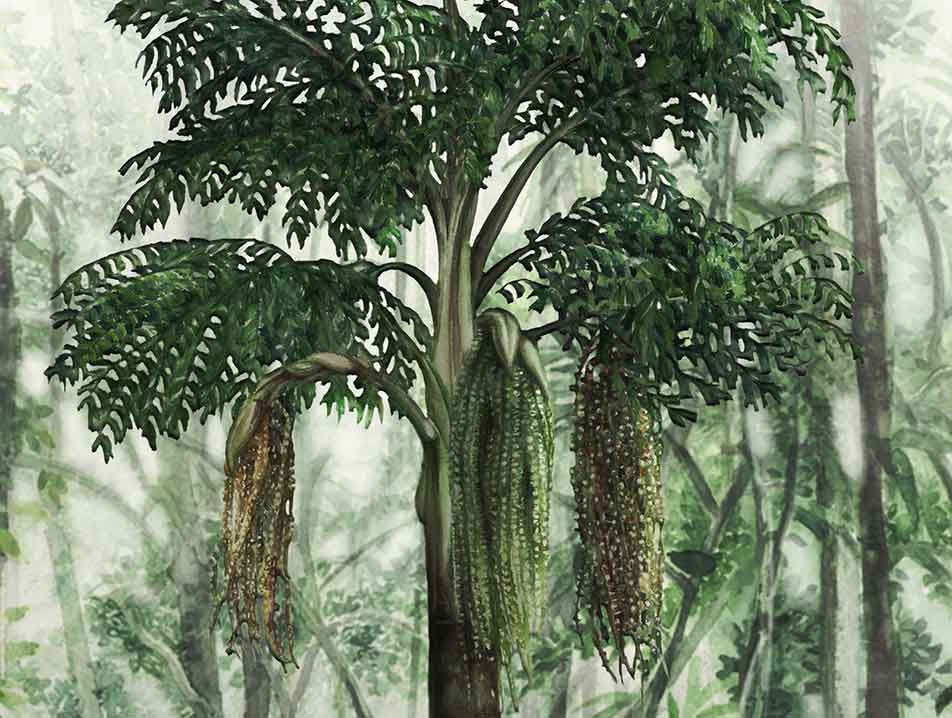
Fishtail Palm
Caryota urens
Often grown ornamentally in cities and named for its fishtail-shaped leaves, this tree is a source of kithul jaggery, toddy and palm wine. The fruits are enjoyed by a host of animals!
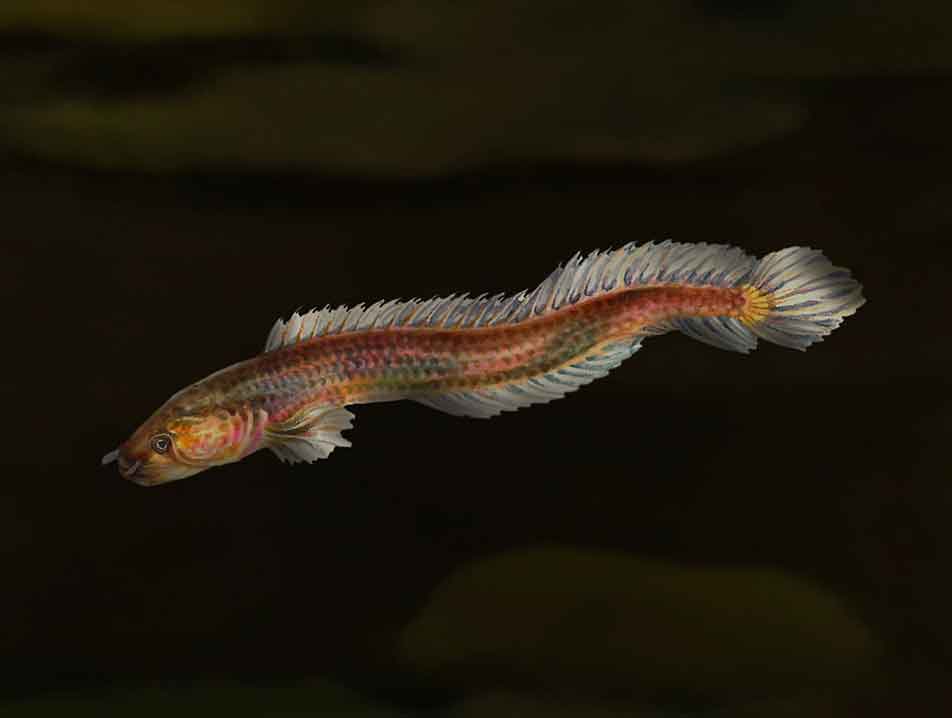
Gollum Snakehead
Aenigmachanna gollum
Unlike many other fish, snakeheads can thrive in deep, low-oxygen waters thanks to a special breathing organ that allows them to subsist on swallowed air. Scientists believe that Gollum Snakeheads in particular evolved at least 109 mya, when the Indian plate had broken away from Gondwanaland and begun its northward drift. Quite probably, isolation brought on by continental breakup gave rise to this unique, ancient fish. Living in the depths of subterranean aquifers, Gollum Snakeheads seem to have survived the very same volcanic activity that spelled doom for the dinosaurs!
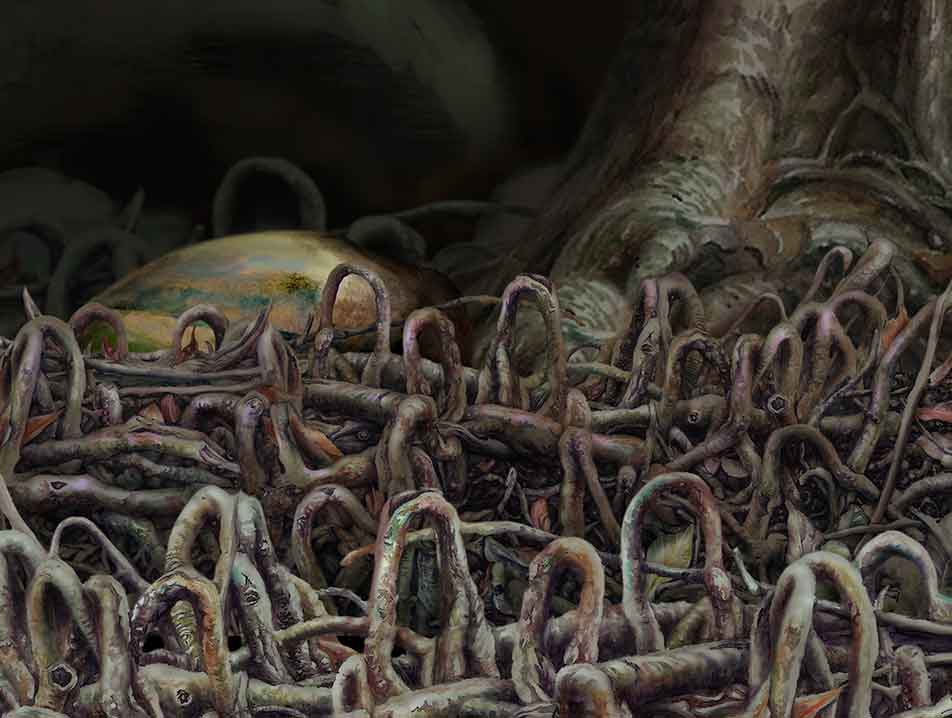
Kanara Nutmeg
Gymnacranthera canarica
Another distinctive, endemic tree, its ‘knee roots’ loop out of the soil surrounding the tree trunk, and have large air gaps called lenticels. Since these plants respire anaerobically, there is a high build-up of toxins such as acetaldehyde, ethyl alcohol and ethylene. Lenticels allow swamp plants to get rid of toxic waste, while also helping the plant to breathe in fresh air in oxygen-starved soils. A study on Myristica swamps of Travancore found that knee roots also oxidate soils around them.
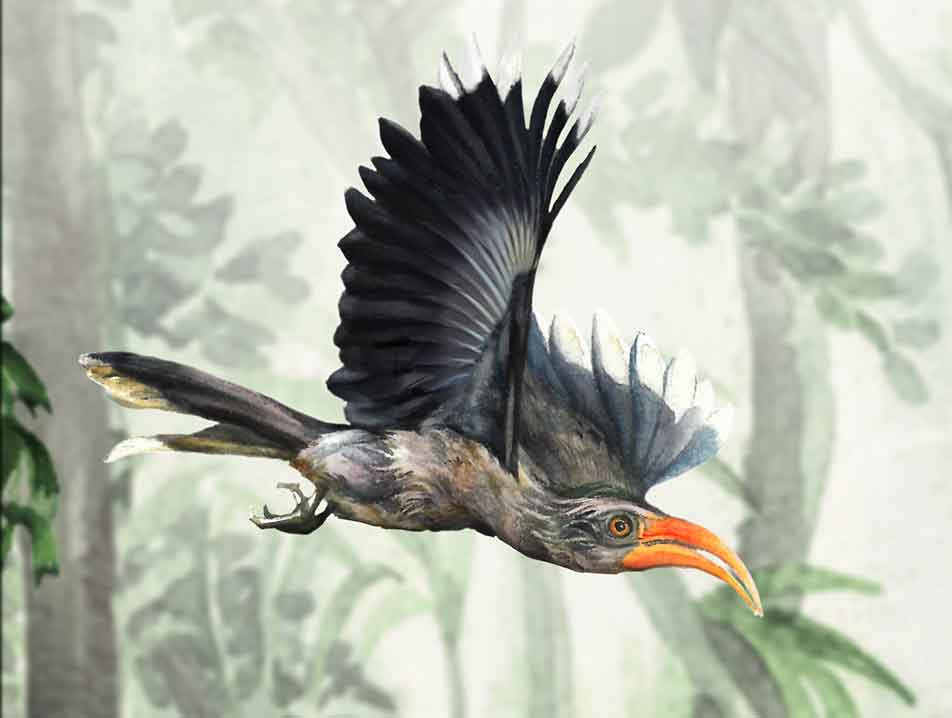
Malabar Grey Hornbill
Ocyceros griseus
India is home to nine species of hornbills, of which four are found in the Western Ghats. These large, predominantly frugivorous birds mate for life: partnerships are formed after competing males perform mid-air acrobatics for potential mates. The winning male presents fruits to his female counterpart, and the pair then go off in search of a suitable tree cavity in which to lay their nest. The female hornbill enters the cavity alone, plastering and sealing herself inside with only a small slit left open for contact with her mate. Through this opening, the male hornbill slips his young family a variety of insects and fruits, including figs and Myristica.
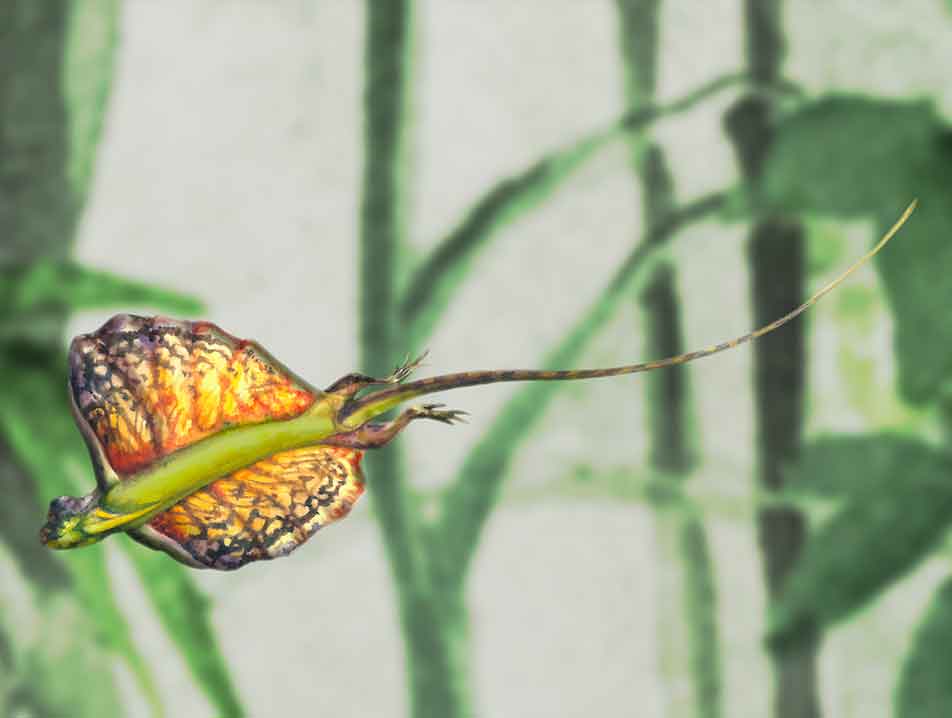
Indian Flying Lizard
Draco dussumieri
A brown, patchy body helps dracos camouflage perfectly against coarse, woody tree trunks. But their full glory is revealed when they spread their wing-like extensions (patagia), allowing them to glide gracefully between trees. Otherwise kept folded on either side of their bodies, the patagium acts like a parachute, helping dracos soar over long distances. Additionally, they possess a unique ‘dewlap’ or bright yellow-green extension from under the chin, which they wiggle up and down as a form of communication and display.
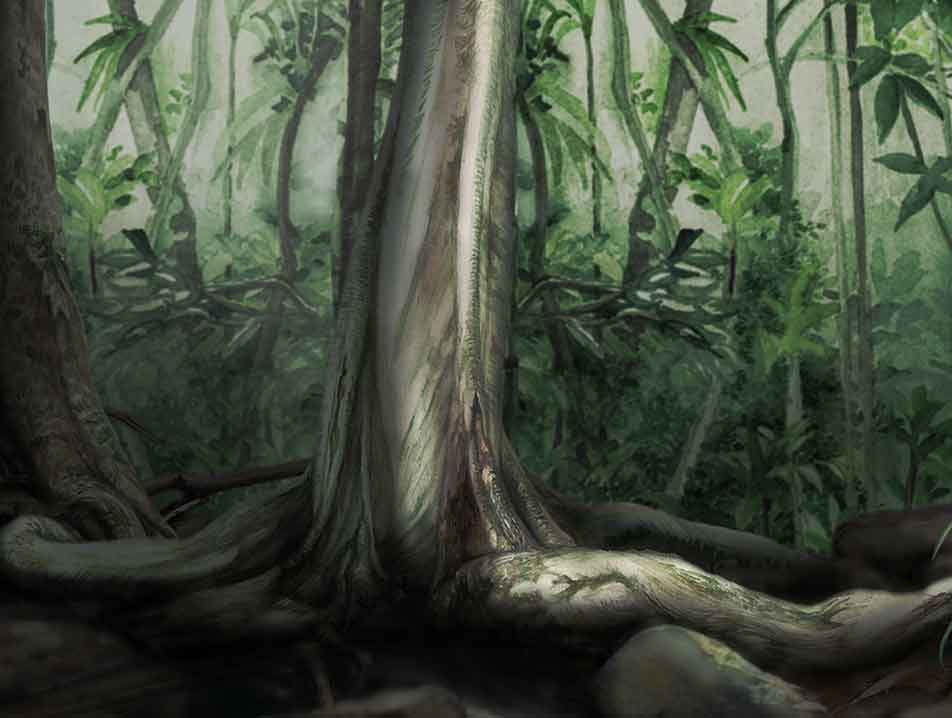
Wight’s Crest-Petal
Lophopetalum wightianum
Often, Myristica swamps are found alongside evergreen forests. Evergreen species like Lophopetalum wightianum, Elaeocarpus tuberculatus, Dipterocarpus indicus are found mostly in such sacred forests, which have been protected for centuries by local communities. A study found that the basal area of trees (i.e. the thickness of their trunks) in Myristica swamps is much higher than elsewhere, indicating that these swamps are mature, old growth habitats, practically impossible to replace. This gigantic Lophopetalum tree also has large, snaking ‘serpentine’ roots, which give it support in swampy soils.
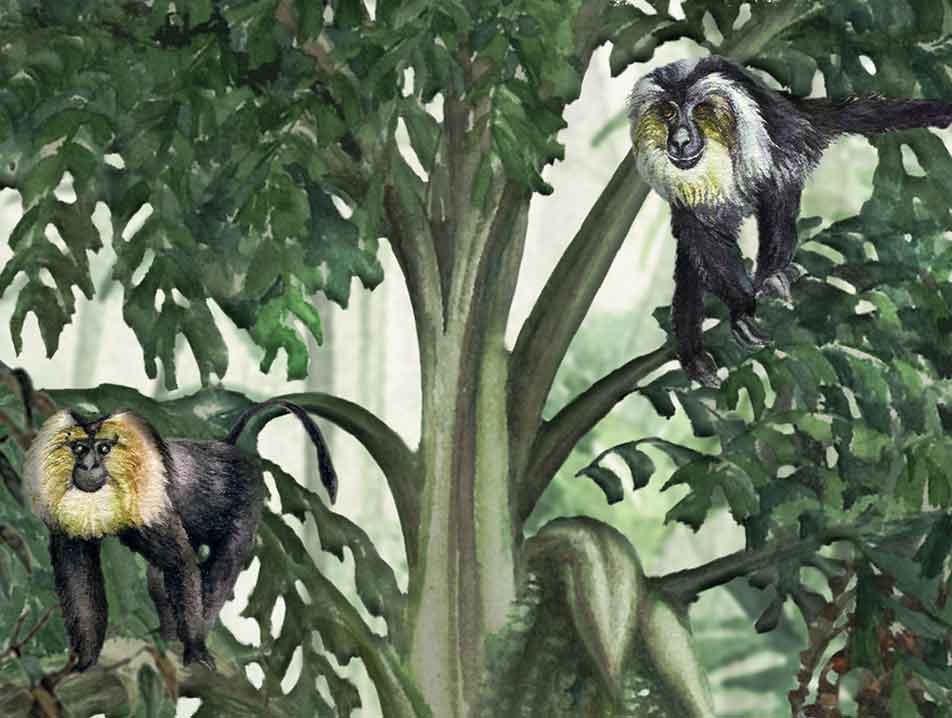
Lion-Tailed Macaques
Macaca silenus
LTMs are Old World monkeys related to the first macaques that arrived from Africa about 5 mya, but now endemic to the Western Ghats. These shy ‘specialist’ primates thrive in select habitats with familiar food sources, such as Myristica swamps. Roaming in groups of 10–25 and up to 60, they feast on fruit like jackfruit and wild durian, while also serving as important seed dispersers for the swamp species Semecarpus kathalekanensis.
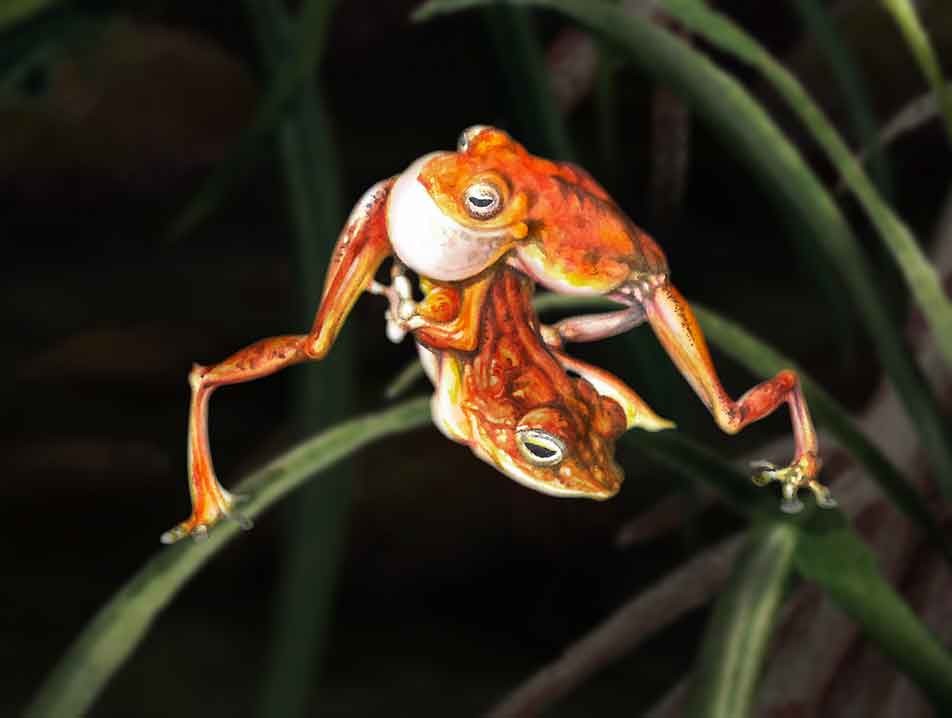
Myristica Swamp Tree Frog
Mercurana myristicapalustris
In 2013, researchers Robin Abraham and Dr Anil Zachariah discovered the Myristica Swamp Tree Frog, (so far only found in this habitat). The rusty brown males (only about 3.5cm long) gather at breeding sites, perching atop understory vegetation, like Pandan. From there, they call out to potential female mates, who are slightly larger, with bright green and yellow bodies. Individual male calls aren’t loud but occasionally they become synchronised, resulting in a chorus which can be heard about 20m away! The researchers were so surprised by this tuneful chorus that they named the frog after Freddy Mercury, the lead singer of rock band Queen. Male frogs were even observed engaging in physical combat with each other—wrestling, kicking and screeching to protect their turf. Once a female chooses her mate, they descend to the forest floor where she lays her eggs.
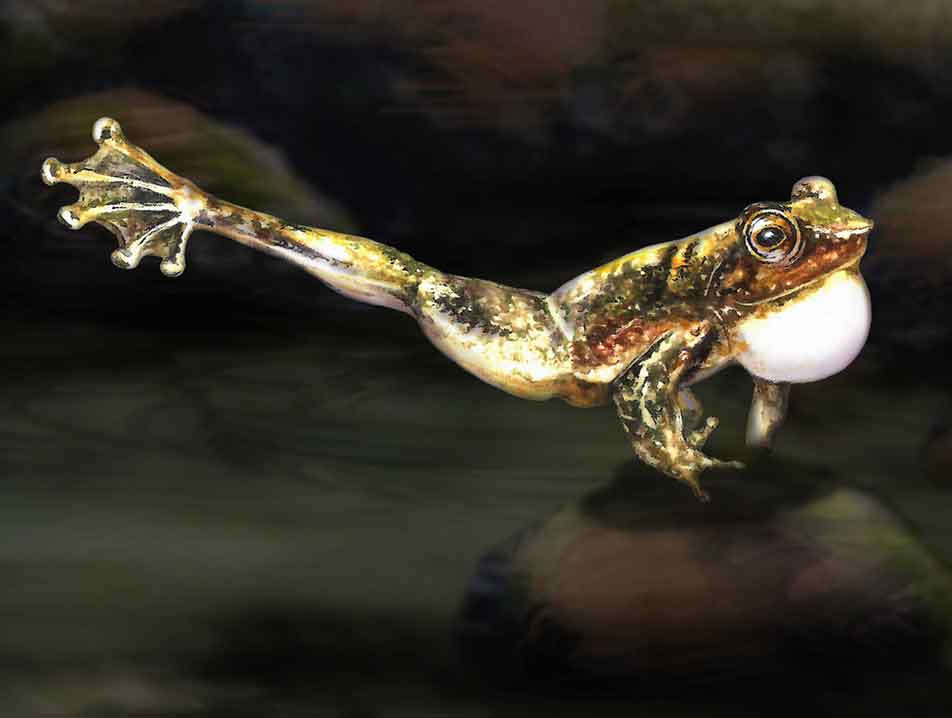
Kottigehar Dancing Frog
Micrixalus kottigeharensis
The frog family Micrixalidae diverged from all other amphibian species about 70 mya—around 5 my before the extinction of dinosaurs—making these little creatures very unique. Being under 3 cm long, the brown male is fairly inconspicuous in swampy leaf litter. With the din of rushing water in the swamp, its modest call isn’t enough to attract a mate. Instead, it dances, kicking back its hind legs and flashing its toe webs. Scientists call this ‘foot-flagging’, hypothesising that male frogs use this movement both to lure females and to fight off rival males!
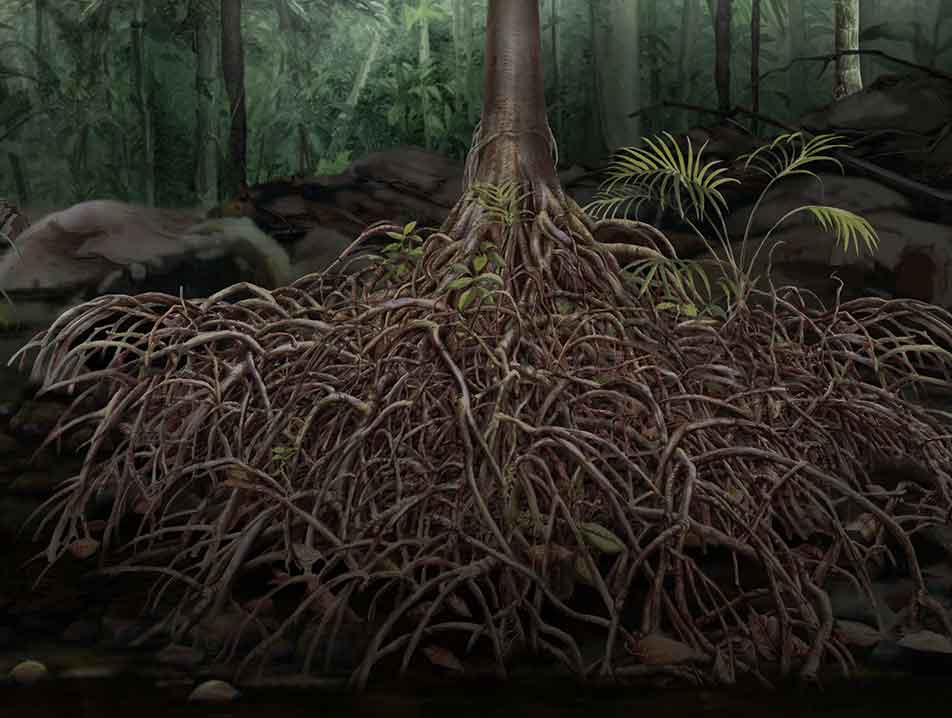
Magnificent Nutmeg
Myristica magnifica
Perhaps the most distinctive member of the family, with stilt roots rising from the base of the tree stem. A close relative of ‘true nutmeg’ (Myristica fragrans, native to the Spice Islands of Indonesia), evidenced by their similar fruit and seeds. We derive the valuable nutmeg spice from the seed of this Indonesian fruit, while its brightly coloured seed coating or ‘aril’ gives us the mace spice.
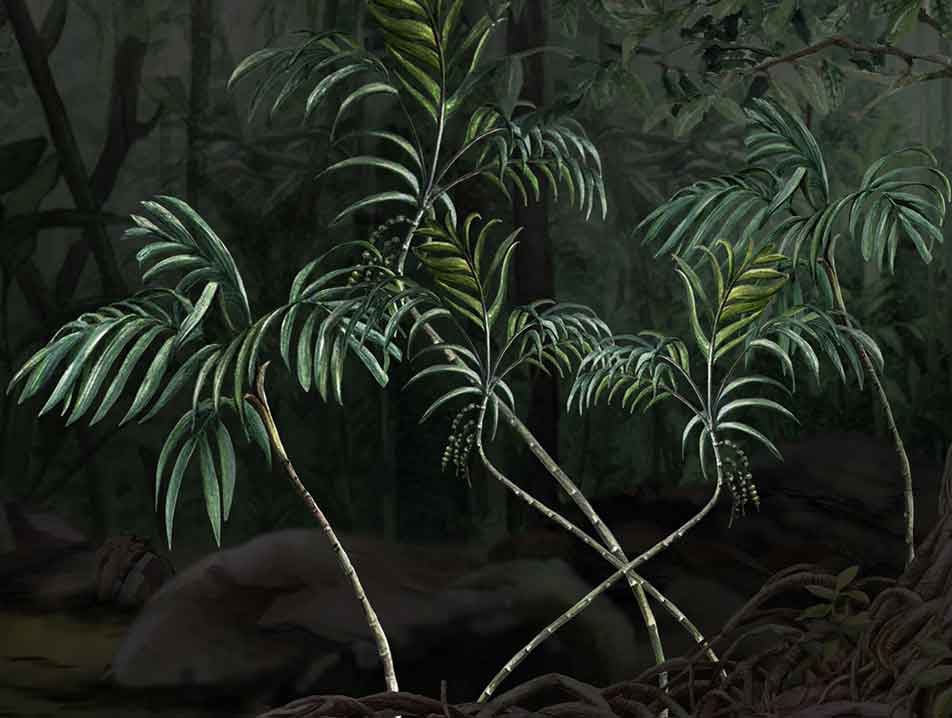
Dickson’s Palm
Pinanga dicksonii
Palms are trees, shrubs or climbers belonging to the Arecaceae family—a diverse plant group growing in tropical and subtropical regions, including trees like coconut, date palm, oil palm and areca nut. The earliest palm species fossils date back to 80 mya, during the Late Cretaceous period (when the Western Ghats were being formed), placing palms amongst the earliest recognisable flowering plants on earth! Dickson’s Palm propagates through a spongy rhizome—yet another adaptation for growing in a flooded habitat.
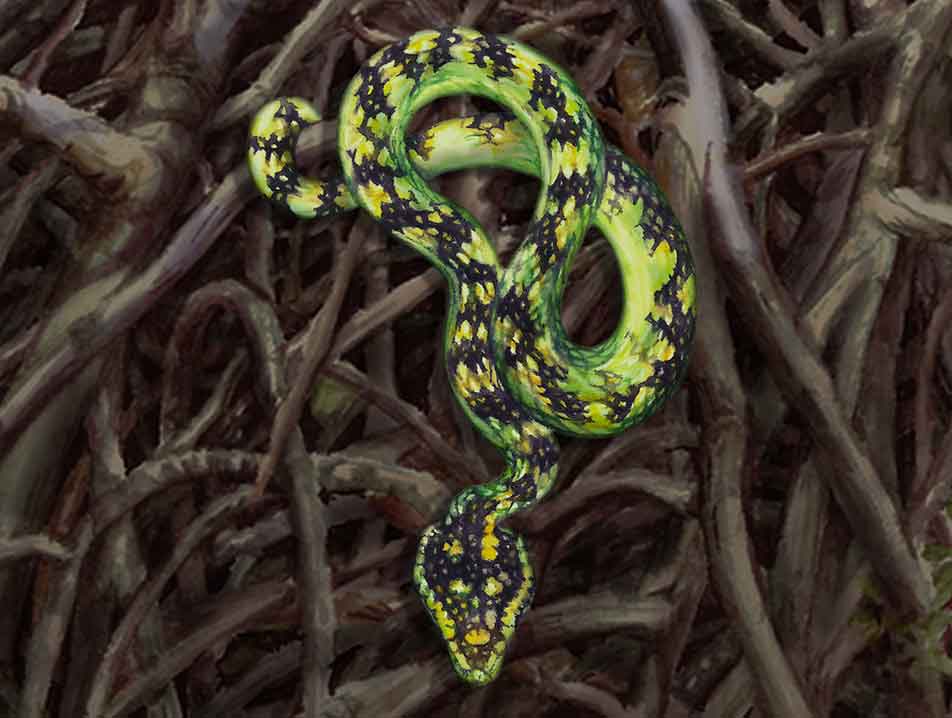
Malabar Pit Viper
Trimersurus malabaricus
Other snakes in this habitat include the Python (Python molurus), King Cobra (Ophiophagus hannah) and Humpnosed Pit Viper (Hypnale hypnale).
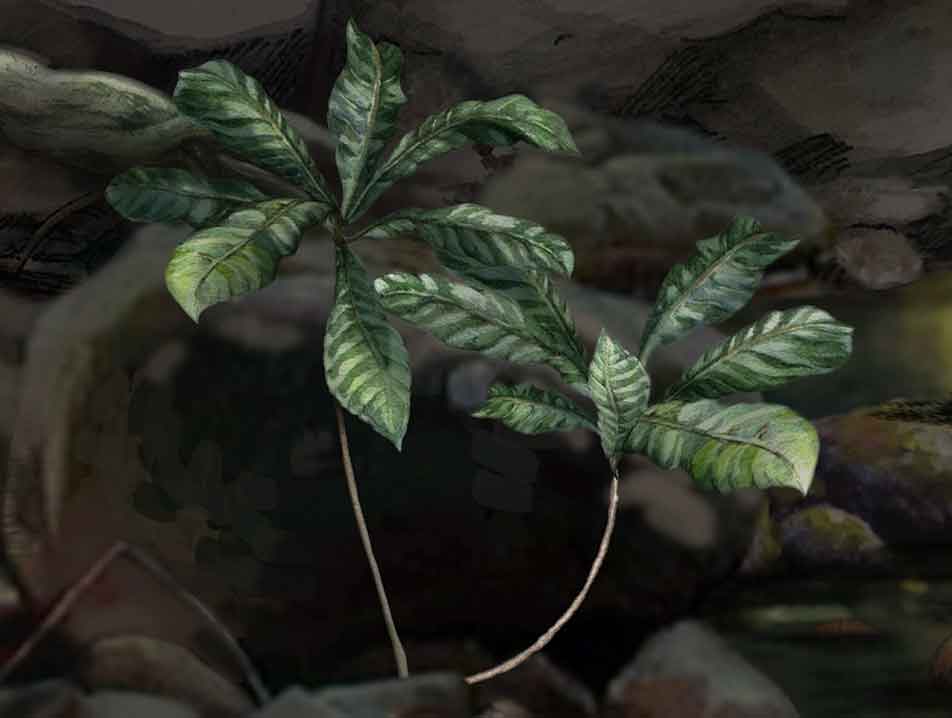
Kathlekan Marsh Nut (tree sapling)
Semecarpus kathalekanensis
In the year 2000, scientists discovered a new tree species with large leaves and spongy knee roots arising from the swampy soils. It was named after the Kathlekan swamps of Uttara Kannada, which translates to ‘dark forests’. Such a recent discovery indicates that there is still so much to be discovered from these forests!
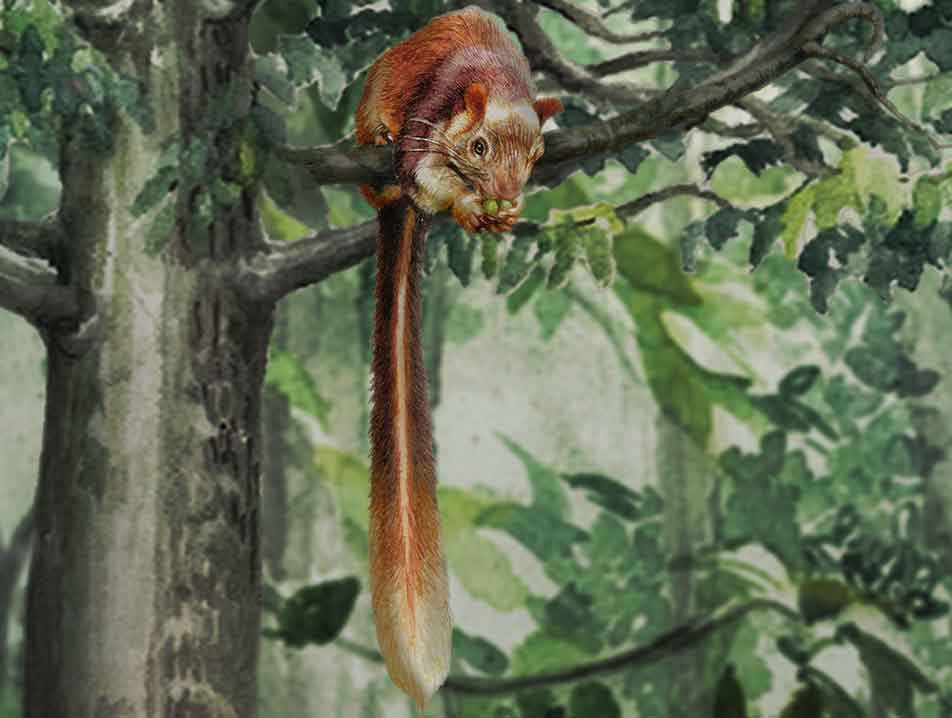
Malabar Giant Squirrel
Ratufa indica
One of the largest squirrels in the world, they are typically solitary animals that only come together for breeding. They are believed to play a substantial role in shaping the ecosystem of their habitat by engaging in seed dispersal, though their diet also includes flowers and tree bark.
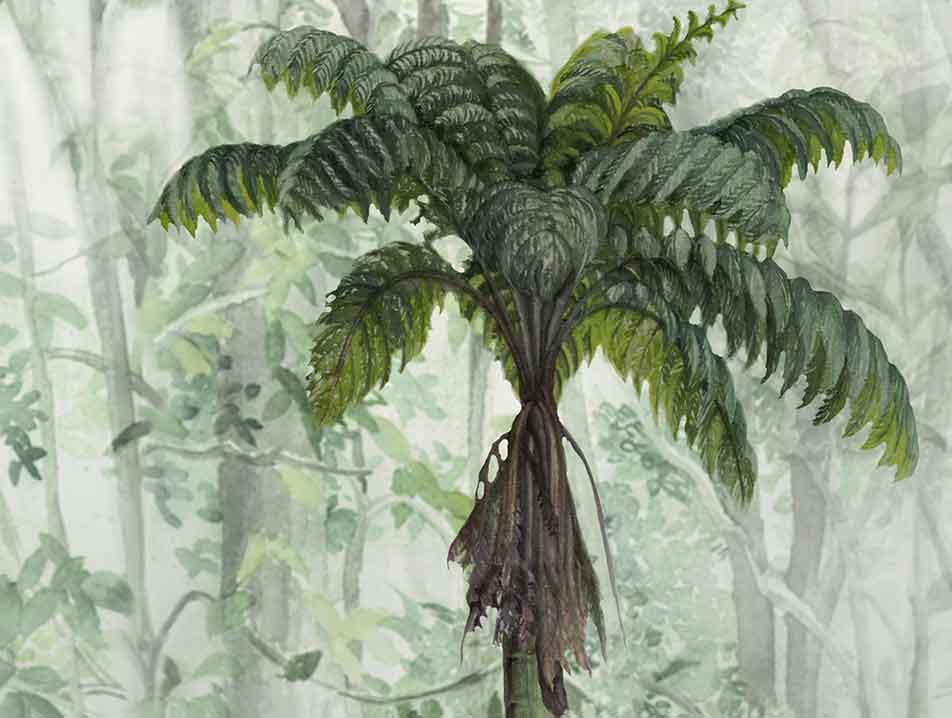
Nilgiri Tree Fern
Cyathea nilgiriensis
Ferns are a fascinating group of non-flowering plants that reproduce through spores rather than fruits, flowers and seeds. They originated during the Carboniferous period (358 mya), and many are still in existence—like this south Indian endemic tree fern that probably evolved in the early Cretaceous. About 250 mya ferns dominated Earth’s vegetation, but were slowly overtaken by seed-bearing, flowering plants. Botanists study them to understand the evolution of plant vascular systems.
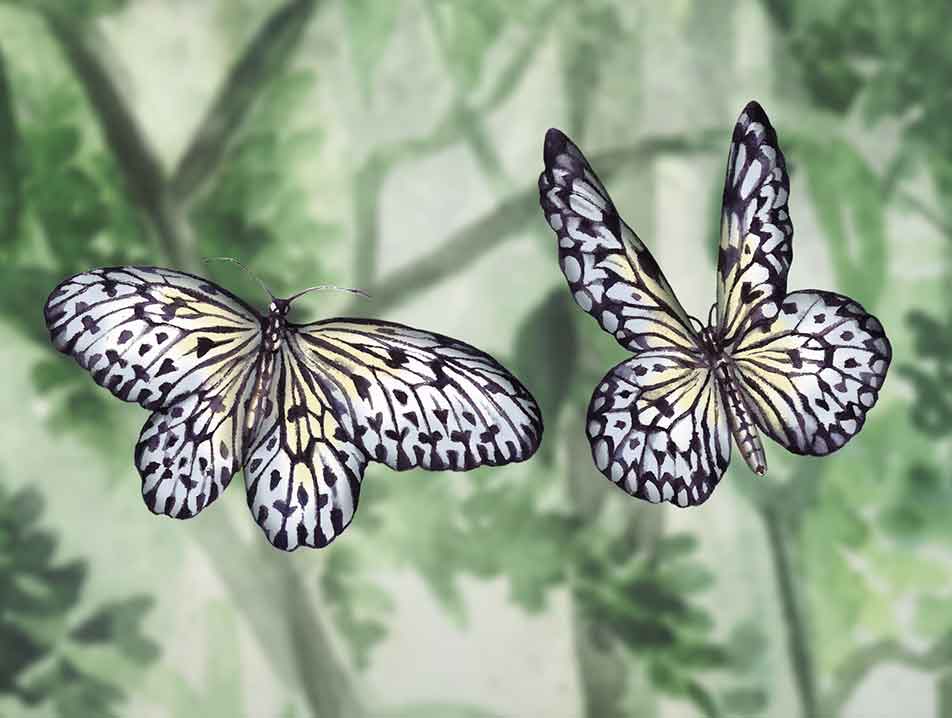
Malabar Tree Nymph
Idea malabarica
These large, white butterflies can be seen gliding slowly above the swamp canopy, dropping lower down in forest openings every now and then. Other species often like to camouflage and fly quickly, to avoid being caught by bird predators but the tree nymph has a trick up its sleeve—its nasty, ‘unpalatable’ taste gives it the freedom to fly free.
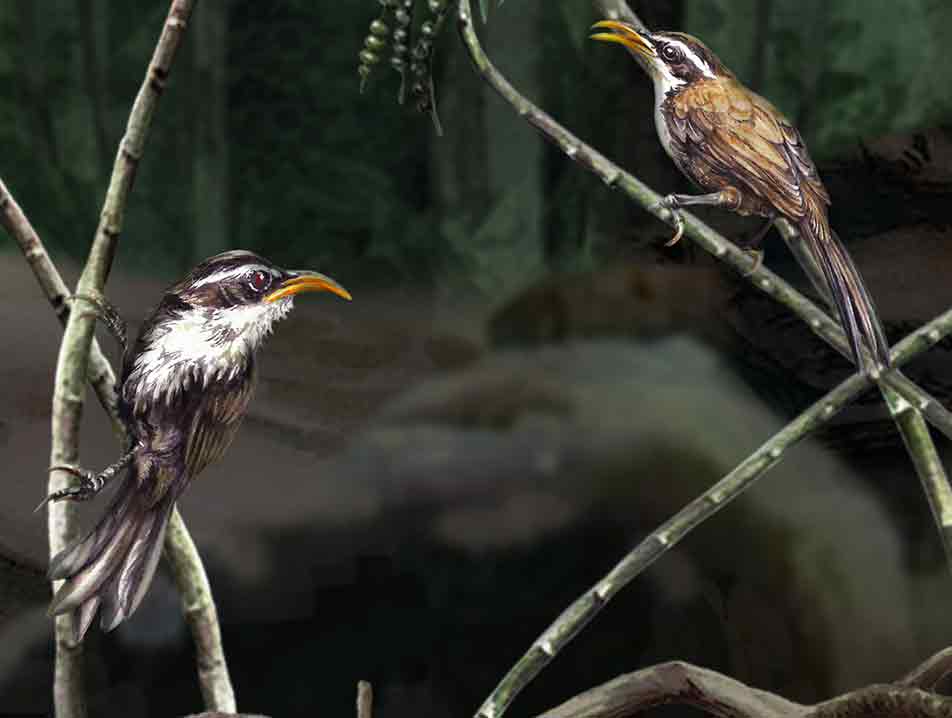
Indian Scimitar Babbler
Pomatorhinus horsfieldii
These birds feed on insects in the understorey of the forest. Hopping on the ground, they may sometimes turn over leaves or poke at dry leaves in search of prey.
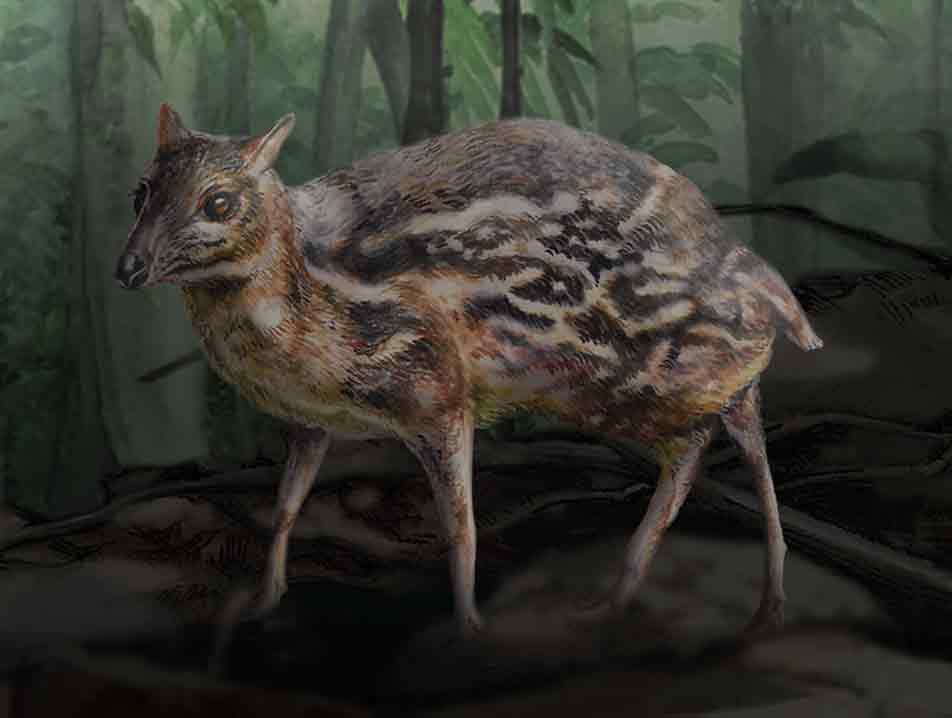
Indian Mouse Deer (Chevrotain)
Moschiola indica
These nocturnal ungulates are only 54 cm in length on average—the smallest hoofed mammals in the world!
Flora
It’s easy to tell when you’re in a Myristica swamp: typically located along a perennial stream, they are usually flooded with gushing freshwater. In these waterlogged lands, plants often cleverly evolve adaptations to survive, such as aerial roots. These roots pop up above the forest floor in an entanglement of loops, knobs, serpents and flying buttresses, helping plants breathe despite all the water, and sending out toxic byproducts from anaerobic (without oxygen) respiration. Members of the Myristicaceae (nutmeg) family, like the Magnificent nutmeg and Kanara nutmeg, dominate these swamps, giving them their name.
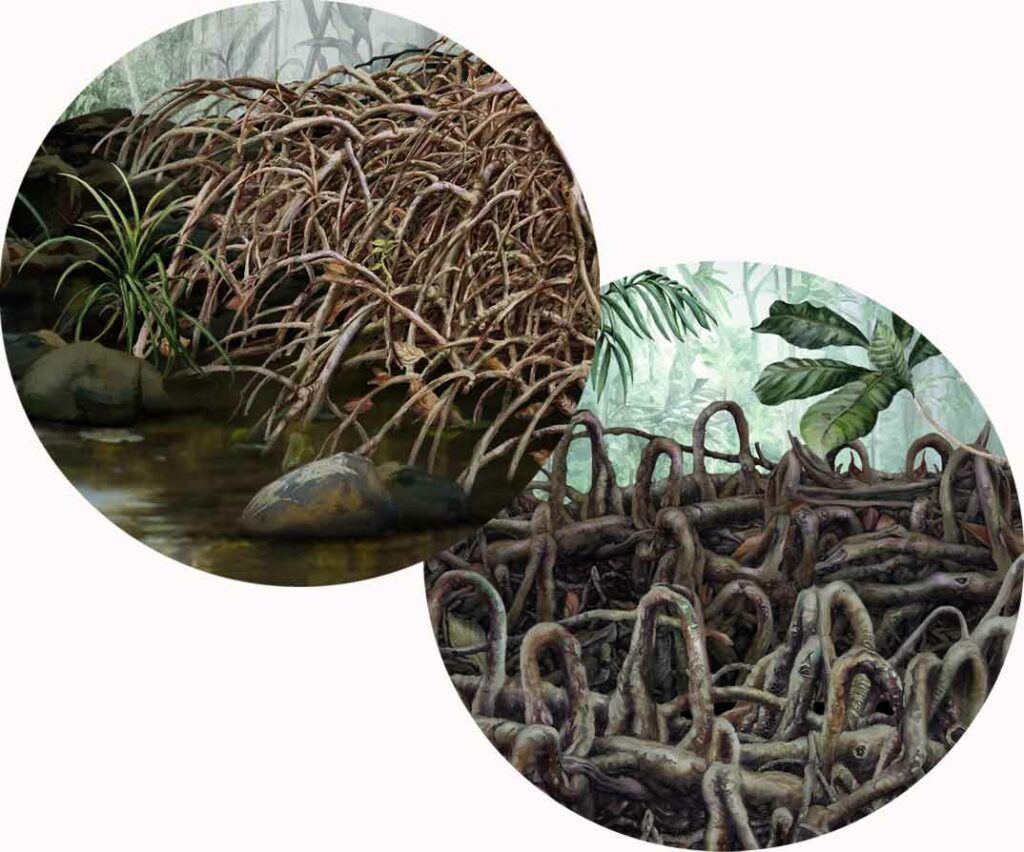
Fauna
Forests that are rich in flora often support great faunal diversity. Such complex forests can accommodate more species and their specialised interactions by providing a variety of ‘microclimates‘—hiding and nesting sites for a range of animals. Myristica swamps, especially those that have been protected for centuries, are prime examples.
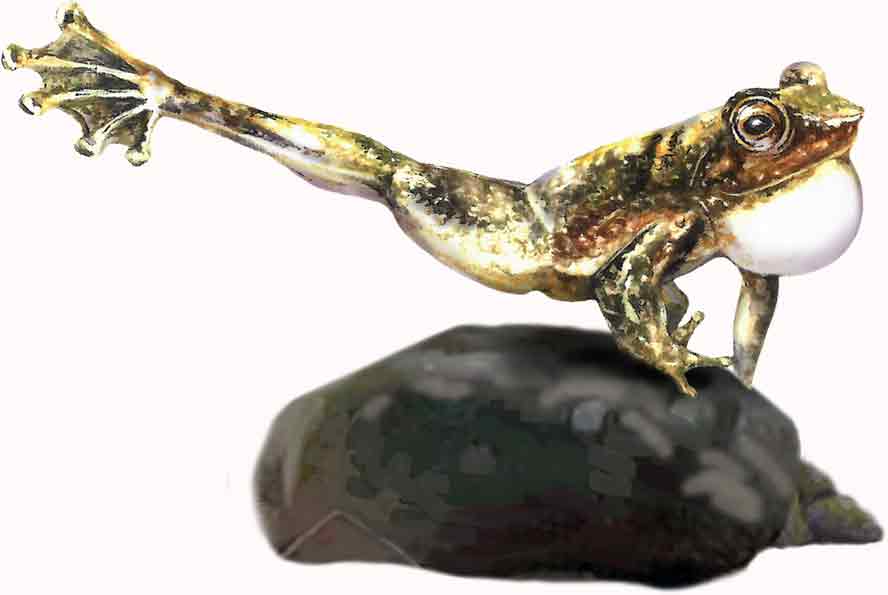
The presence of amphibians is a good indicator of ecosystem health because they are very sensitive to environmental change. Since adult amphibians live on both land and water, swamps serve as ideal habitats. Can you find two species of frog in the swamp?
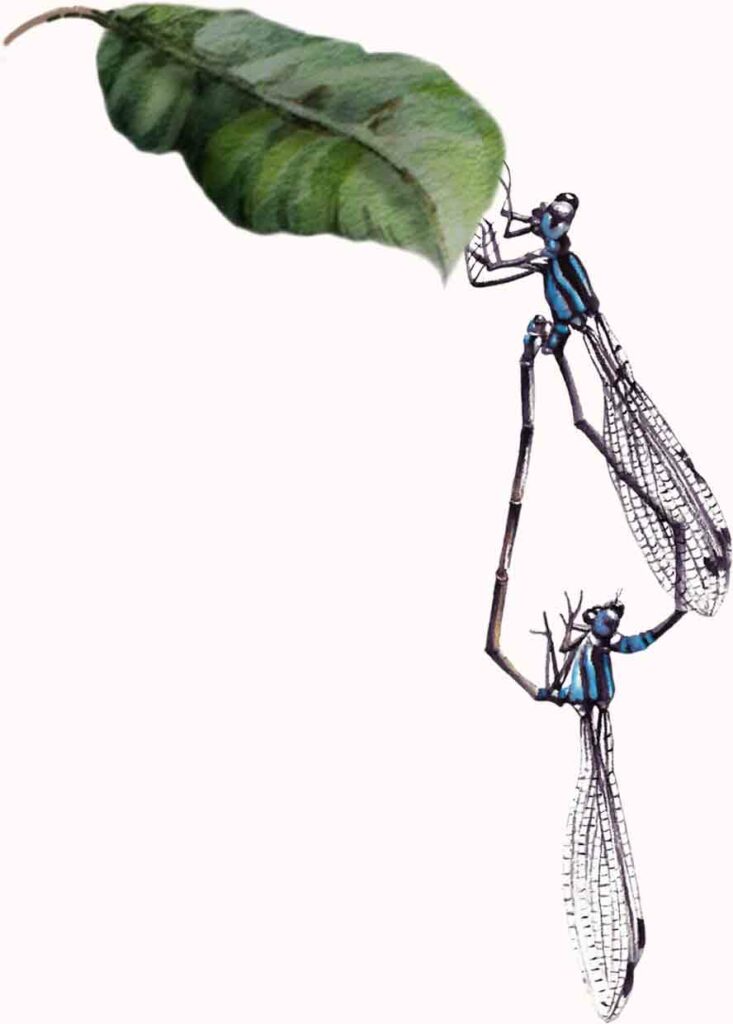
Aquatic insects are found where terrestrial and (mainly) freshwater ecosystems meet—lakes, ponds, springs, streams, rivers and wetlands. Mayflies, beetles, dragonflies and other insects play vital roles, helping to break down wood and leaf litter into forms that can be absorbed by fungi, bacteria and subsequently by plants. They also form food for fish, birds, frogs and other predators, and their presence indicates a healthy riverine ecosystem.
These swamps are known for beautiful damselflies, with names as magical as Myristica bambootail, Clear-winged forest glory, Stream ruby, and Malabar torrent dart. Damselflies are similar to dragonflies, except that they are smaller and slimmer. They also usually hold their wings together while at rest, while dragonflies hold them open. Together they make up the order Odonata, which has existed for over 250 my—descendants, in fact, of the first ancient winged insects! Can you spy the Myristica bambootail in the swamp?
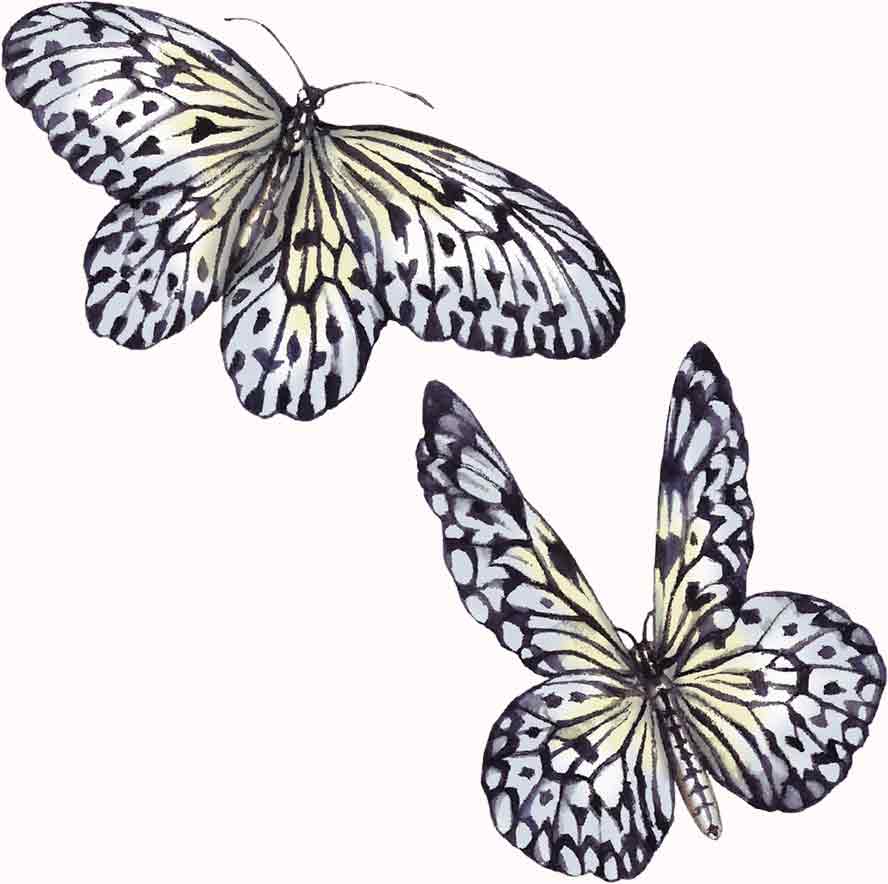
Certain butterflies rely on specific habitats because their caterpillars feed on ‘host’ plants that can only be found here. Female butterflies lay their eggs on these leaves so that the young caterpillars won’t have to travel far to feed. Spot the Malabar tree nymph!

Stream waters in and around the swamps hold many more unexpected treasures. In 2018, after devastating floods hit the southern state of Kerala, pictures of a strange-looking fish began to circulate online. The mystery species seemed to have been flushed out of underground aquifers, prompting scientists to investigate. When they realised they had a previously undiscovered subterranean fish on their hands, they named it the Gollum Snakehead, after the shadowy monster from the Lord of the Rings. Find one in the swamp.
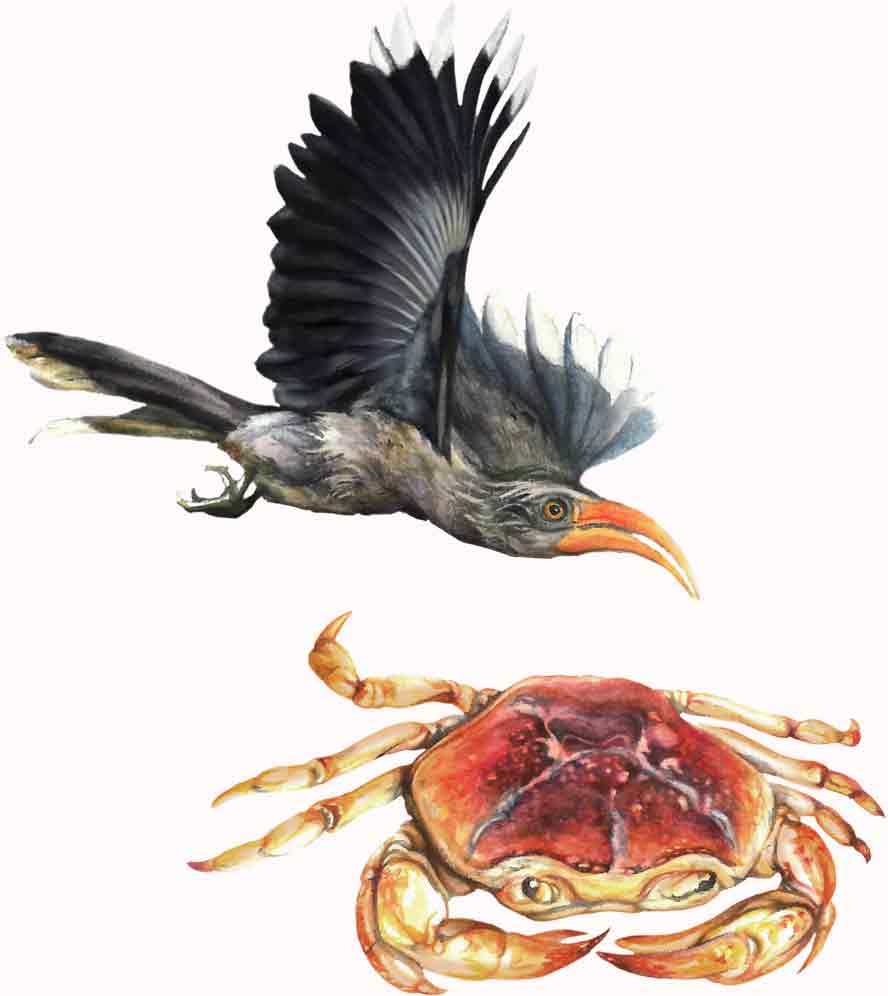
Frugivores are animals that primarily feed on fleshy fruits. In the process of gathering and eating these fruits, they help plants carry their seeds away from the mother plant, allowing them to spread far and wide. In fact, plants may have evolved fleshy fruits precisely in order to tempt animals into helping with seed dispersal! Frugivores either benefit plants by dispersing, or hinder them by crushing the seed during digestion. Even as seed destroyers, they may end up helping by dropping seeds along the way, or forgetting where they stashed them!
Usually, large seeds like Myristica are thought to be dispersed by large birds like Hornbills, because they enjoy eating its brightly coloured, nutrient-rich seed coating or aril. However, human impact on surrounding landscapes has introduced new problems: high-flying hornbills are likely to drop seeds in regions that are no longer swamplands—and under unfavourable conditions, Myristica seeds may not germinate.
In 2013, PhD student Shivani Krishna discovered an unexpected Myristica seed disperser: the freshwater crab! See it scurrying in the swamp? Look out for other frugivores like the lion-tailed macaque, giant squirrel and hornbill.
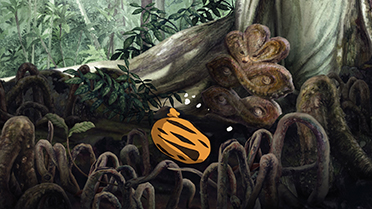 Back to top
Back to top
